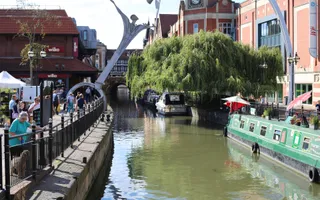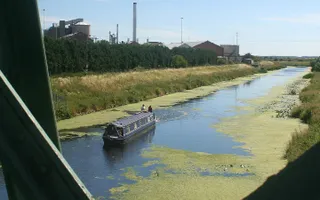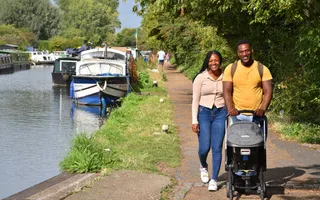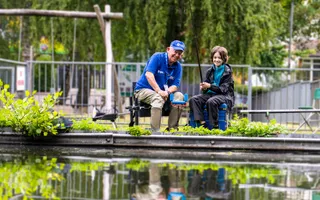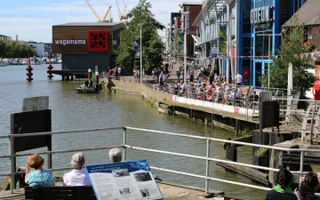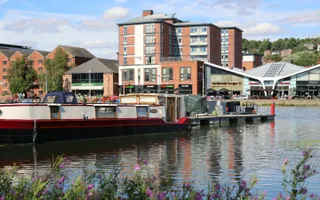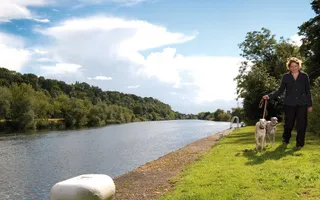At Boston, it passes the dramatic Boston Stump church tower, its great height all the more striking in the middle of the flat fenlands. At Fiskerton Fen Nature Reserve, you can see the thriving wetland and reedbed habitats that were largely lost when this area was reclaimed from the marsh. It is home to bitterns, marsh harriers, and the almost-extinct great water parsnip.
The Water Rail Way is a walking and cycling route that follows the course of the River Witham on the disused Lincoln to Boston railway line. Along the way, you can spot the sculptures inspired by all that is great about Lincolnshire.
One of the most distinctive features of this navigation is the ‘Glory Hole' at Lincoln, where the canal passes through an arch in an ancient half-timbered building which stands right across the water.
The number of facilities for boats has increased in recent years, with plenty of visitor moorings in calm and pretty spots. At Anton's Gowt, boaters can enter and explore the backwaters of the Witham Navigable Drains (not managed by the Canal & River Trust).
Find stoppages, restrictions and other navigational advice for this waterway.


